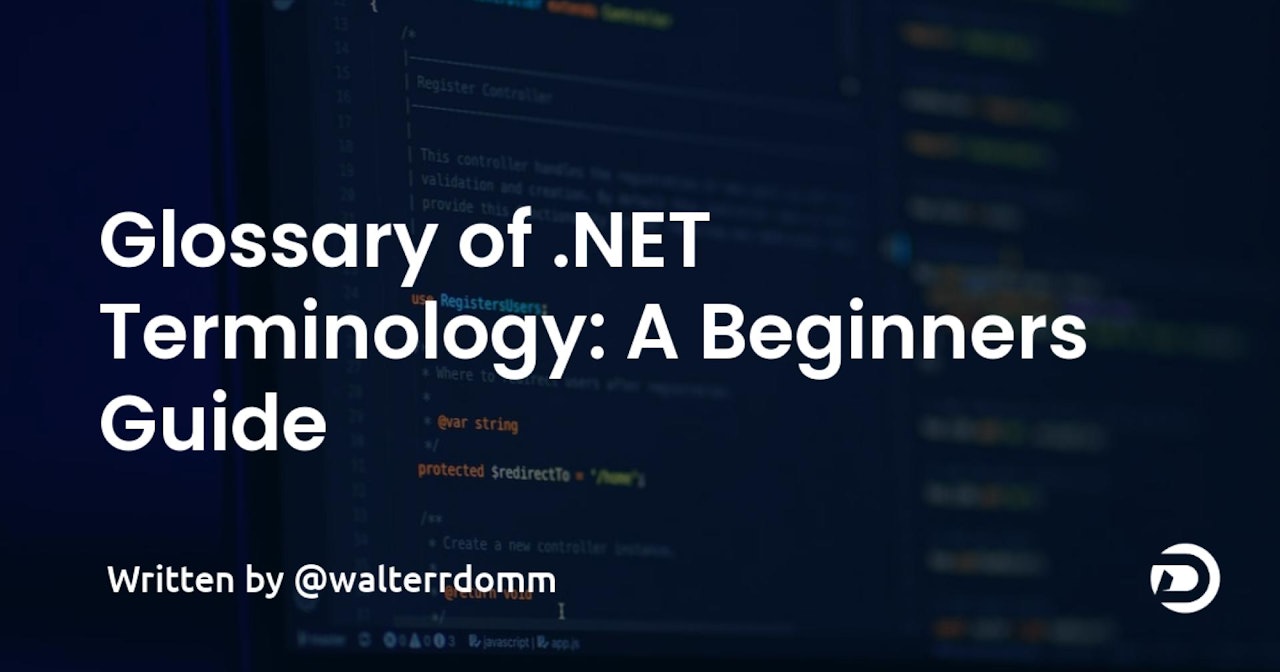.NET is a powerful and versatile platform for developing software applications, and it comes with its own set of terms and jargon that can be confusing for new developers. In this blog, we will provide a comprehensive glossary of terms used in the .NET ecosystem to help you navigate the platform and understand the concepts and technologies involved.
1. CLR (Common Language Runtime) - The CLR is the heart of the .NET Framework, responsible for managing the execution of .NET code. It provides a consistent and secure execution environment for all .NET applications, ensuring that they run smoothly and efficiently.
2. CTS (Common Type System) - The CTS is a set of rules that define how data types are defined, used, and managed in the .NET Framework. It ensures that objects written in different languages can interact with each other seamlessly.
3. C# (C Sharp) - C# is a modern, object-oriented programming language developed by Microsoft as part of the .NET Framework. It is widely used for developing Windows desktop and web applications, as well as games and mobile apps.
4. F# (F Sharp) - F# is a functional-first programming language developed by Microsoft as part of the .NET Framework. It is widely used for developing applications in the financial, scientific, and engineering domains.
5. Visual Basic .NET - Visual Basic .NET is an object-oriented programming language developed by Microsoft as part of the .NET Framework. It is widely used for developing Windows desktop applications and is known for its simplicity and ease of use.
6. ASP.NET - ASP.NET is a web application framework developed by Microsoft as part of the .NET Framework. It allows developers to create web applications using C# or Visual Basic, and it provides a wide range of features and tools for developing web applications quickly and easily.
7. .NET Core - .NET Core is a cross-platform, open-source implementation of the .NET Framework that can run on Windows, Linux, and macOS. It allows developers to create and deploy their applications on a wide range of platforms, including Microsoft Azure and AWS.
8. Xamarin - Xamarin is a tool that allows developers to create mobile apps using C# and the .NET Framework. It allows developers to share code across multiple platforms, including iOS, Android, and Windows.
 View Website
View Website
 View Website
View Website
 View Website
View Website
9. SignalR - SignalR is a library that allows developers to add real-time communication to their applications. It allows clients and servers to send and receive messages in real-time, making it ideal for chat applications, multiplayer games, and other real-time scenarios.
10. Blazor - Blazor is a framework that allows developers to create web applications using C# and WebAssembly. It allows developers to write C# code that runs directly in the browser, eliminating the need for JavaScript.
11. Entity Framework - Entity Framework is an Object-Relational Mapping (ORM) tool that allows developers to work with databases using C# or Visual Basic. It simplifies data access and eliminates the need for developers to write complex SQL code.
12. NuGet - NuGet is a package manager for the .NET Framework that allows developers to easily add and update libraries and frameworks in their projects. It makes it easy to manage dependencies and ensures that the correct version of a library is used.
13. MSDN (Microsoft Developer Network) - MSDN is a set of resources provided by Microsoft that includes documentation, tutorials, and sample code to help developers learn how to use the .NET Framework and troubleshoot any issues they may encounter.
14. Roslyn - Roslyn is the open-source compiler for C# and Visual Basic. It provides a set of APIs for analyzing and manipulating code, making it easy for developers to create code analysis tools and refactoring tools.
15. IL (Intermediate Language) - IL is the intermediate language that .NET code is compiled to. It is then executed by the CLR, which translates it into machine code. This allows the same IL code to run on different platforms without modification.
16. JIT (Just-in-Time) Compilation - JIT compilation is a process that converts IL code into machine code at runtime. This allows the CLR to optimize the code for the specific machine it is running on, resulting in faster execution times.
17. GC (Garbage Collection) - GC is a mechanism built into the CLR that automatically manages the memory used by a .NET application. It frees up memory that is no longer in use, reducing the risk of memory leaks and improving the performance of the application.
18. DLL (Dynamic Link Library) - DLLs are files that contain code that can be used by multiple applications. They are similar to libraries in other languages, and they allow developers to reuse code and keep their applications modular.
19. PDB (Program Database) - PDB files are used to store debugging information for .NET applications. They contain information about the application's symbols, such as variable names and function names, making it easier for developers to debug their code.
20. MSIL (Microsoft Intermediate Language) - MSIL is another term for IL. It is the intermediate language that .NET code is compiled to, and it is executed by the CLR.
By understanding these terms, you will have a better understanding of the .NET ecosystem and be able to navigate the platform more easily. It will also help you to communicate more effectively with other .NET developers. Additionally, understanding these terms will help you to take full advantage of the features and tools provided by the .NET Framework, allowing you to create better and more efficient software. With the right knowledge and tools, you can become a skilled .NET developer and hire dot NET developer.





Comments (2)